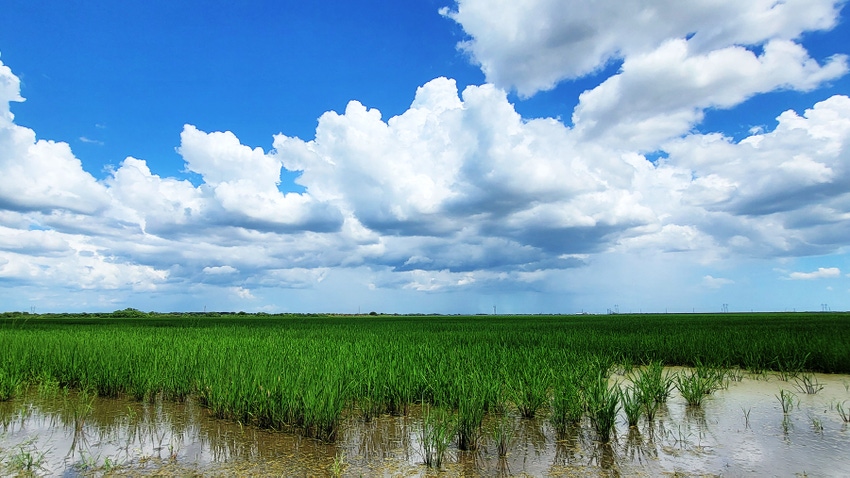
This is the final article in a three-part series about rural real estate values and sales.
A recent USDA report on land values indicated an ongoing upward trend in land values across the United States. That trend has been apparent in the Southwest where Texas and Oklahoma have seen rural land values increase 7.4% and 8.5% respectively. New Mexico values have remained steady.
Factors that contributed to the rise in values include COVID stimulus money, low interest rates, and an increased interest of urban dwellers to move to the country.
So, who is buying rural real estate in the Southwest?
Investors include other farmers and ranchers, outside interests purchasing tracts for recreational use, investors looking for safe havens for their money, and some foreign buyers.
Farmers in the market
Charles Gilliland, research economist with the Texas Real Estate Research Center, College Station, says, based on mostly anecdotal reports, “farmers, buoyed by cash from insurance and stimulus programs, are buying farmland and outbidding investors in the process. Recreational investors are more active buyers of ranch land than those with agricultural interests.
“Buyers in those markets have a complex mix of motives for buying,” Gilliland explains. “Most brokers I speak with say buyers typically don’t discuss their motivation for buying. Nevertheless, many see buyers who are concerned about the uncertainty in our economy and society. They see land as a store of wealth.
“We also are seeing an increase in buyers focused on conservation, including restoring native plants. One has initiated a fund to develop such properties here in Texas for sale to wealthy individuals.
“In addition, some wealthy individuals are purchasing large ranches as working operations with new economic opportunities in mind. The Waggoner Ranch and Four Sixes (6666 Ranch) deals come to mind.”
Gilliland says activity from the oil-induced price surge in the Permian Basin that “drove ranch prices to unheard-of levels has vanished.”
Foreign buyers are in the mix, but not as much as in the recent past.
Oklahoma
Oklahoma State University Agricultural Economics Associate Extension Specialist Roger Sahs, Stillwater, says some foreign investment occurred after the Oklahoma Legislature passed SQ 788 (Medical Marijuana Legalization Initiative) in 2018. “The passage of SQ 788 attracted some interest in Oklahoma ag real estate by foreign buyers, but I don’t have the data to determine to what extent. It did influence localized land values in some areas around the state.
“With the recent regulatory changes and additional enforcement placed on licensing requirements, demand for land by grower interests declined in 2023.”
New Mexico
Dwain Nunez, associate broker in New Mexico for Charles S. Middleton and Sons, Lubbock, says of the eight ranches the company has sold in 2023 “every one was to people in agriculture.”
He says a lot of buyers come out of Texas. “As far as I know, we have never sold to a foreign buyer. In 2022, we sold one large holding to New Mexico Game and Fish.”
He says that acreage will come out of production agriculture but will remain as hunting property with conservation measures in place.
“Other brokers are selling rural real estate to wealthy individuals,” Nunez says. “I’m not certain if those will go back into production.”
Texas
“I don’t hear much about foreign buyers,” Gilliland
says. “They are here, but not as visible as they were in past decades. Dairy farms in North Texas attracted some foreign investors. The largest purchases have been forest land in East Texas, mostly by Canadians.
“Chinese buyers have attracted a lot of attention, but when you look at acreage, they are a small percentage of foreign ownership here. One Chinese investor caused a substantial uproar when he purchased a large ranch in the Devil’s River drainage with the expressed purpose of installing wind farms. Objections from conservationists, lack of a link to the statewide grid, and being in the path of military flight training brought those plans to a halt.”
Foreign holdings
Foreign interests held approximately 40 million acres of U.S. agricultural land as of December 31, 2021, according to a December 2021 US Farm Service Report. That represents 3.1% of all privately held agricultural land and 1.8% of all land in the United States.
The report shows Texas with the largest amount of foreign-held U.S. agricultural land, approximately 5.3 million acres. Maine has the second largest amount of foreign-held agricultural acres, with just over 3.6 million acres, roughly 20.1% of the state’s privately held agricultural land. Colorado has the third largest amount of foreign-held agricultural land, approximately 1.9 million acres.
Foreign entities own 1,670,511 acres in Oklahoma, 4.4% of agricultural land. In New Mexico, foreign entities own 1,263,241 acres, 3.8% of agricultural land.
Foreign buyers
A Congressional Research Service January 2023 report, “Foreign Ownership and Holdings of U.S. Agricultural Lands,” shows five countries accounted for approximately 62% of all foreign-owned U.S. agricultural land in 2021. Canada, at 31%, mostly forestland, tops the list. The Netherlands is second at 12%, followed by Italy at 7% and the United Kingdom and Germany, both at 6%. Other countries with holdings of more than 500,000 acres include Portugal, France, Denmark, Luxembourg, Mexico, Switzerland, the Cayman Islands, Japan, and Belgium.
About the Author(s)
You May Also Like






